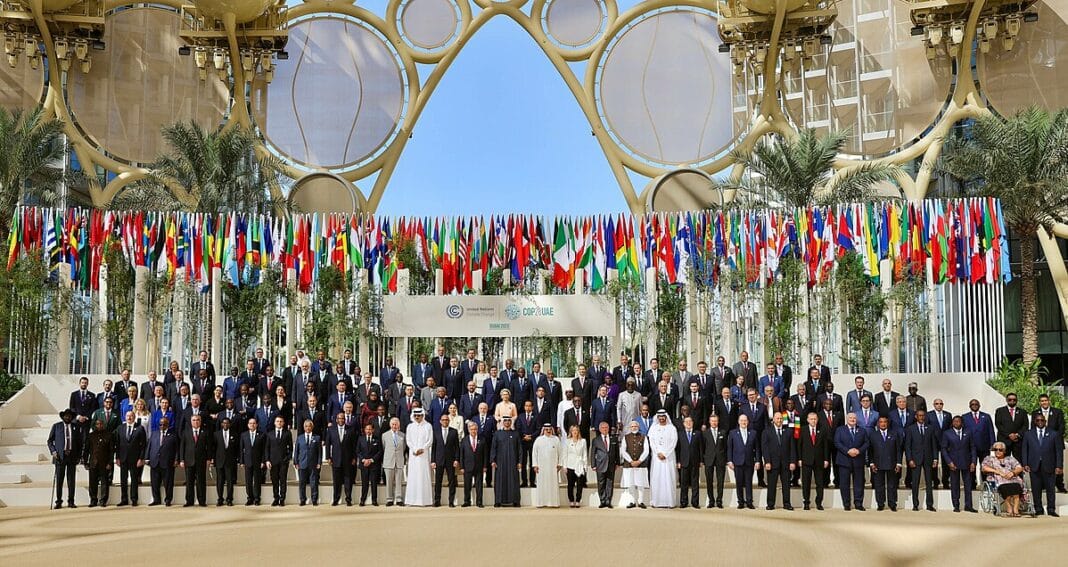It’s official. The international community has agreed to establish an international carbon credit market, with negotiators agreeing to establish a UN-operated market that provides standardised methodologies for credits between countries and across trading zones. Wood Central understands that the new market could come into effect as soon as next year.
In a landmark decision agreed to during the first day of COP29 talks, leaders have adopted the new operational standards for a mechanism of the Paris Agreement under Article 6, setting the stage for a global carbon market.
This adoption of Article 6.4, achieved during the Conference of the Parties serving as the meeting of the Parties to the Paris Agreement (CMA), sets the stage for operationalising Article 6, which has faced years of deadlock.
Wood Central understands that Article 6 facilitates international collaboration to lower carbon emissions. It offers two pathways for countries and companies to trade carbon offsets, supporting the achievement of emission reduction targets set in their climate action plans or nationally determined contributions (NDCs).
The first option, known as Article 6.2, allows two countries to establish a bilateral carbon trading agreement under their own terms. The second, Article 6.4, seeks to develop a centralised, UN-managed system to enable both countries and companies to offset and trade carbon emissions.
Speaking to Reuters, Juan Carlos Arredondo Brun, a former climate negotiator for Mexico who now works for carbon market data and souring company Abatable, said the endorsement “will bring us closer to operationalising the carbon market before any single party may decide to move away from the Paris Agreement”.
Carbon credits theoretically allow countries or companies to pay for projects anywhere on the planet that reduce CO2 emissions or remove it from the atmosphere and use credits generated by those projects to offset their emissions.
It comes weeks after bureaucrats agreed on a series of crucial standards required to operationalise a new crediting mechanism ahead of COP29.
COP29 is pushing for a new approach to Article 6.4 discissions
During the five-day meeting, discussions focused on two key standards:
- Standard on methodology requirements: Requirements for developing and assessing projects under the Paris Agreement Crediting Mechanism.
- Standard on activities involving removals: Requirements for projects that remove greenhouse gases from the atmosphere.
“These new standards are a key element in our effort to deliver a crediting mechanism that is fit for the future,” said Maria AlJishi, Chair of the Article 6.4 Supervisory Body – responsible for establishing the carbon mechanism. “As the only crediting mechanism directly responsible to Parties and mandated by the Paris Agreement, we are committed to ensuring it balances the needs of achieving the Paris goals, supporting market players, and addressing host country interests.”
Why Carbon Credit Talks Collapsed in Dubai
The new talks come after the COP28 president presented a “take it or leave it” proposal to climate negotiators that was deemed unacceptable and roundly rejected. The collapse left bilateral deals in limbo – with several countries striking deals to buy carbon credits from others to meet their emissions targets.
The discussions were a crucial focus of the Dubai Summit. They followed COP26, where negotiators in Glasgow reached an agreement to regulate the trading of carbon credits in schemes first envisioned in Article 6 of the 2015 Paris Agreement.
However, the countries disagreed on the fundamental rules for trading offsets bilaterally and kickstarting the UN-sanctioned market, which could pave the way for global governments to drive carbon investment into publicly owned forests.
Where the US championed a “light-touch, no-frills” approach, with the market fuelled by the private sector in the voluntary market, the EU – backed by Latin America and Africa – wanted a “compliance market” focus with more vigorous checks and balances and a “loosening of confidential clauses”, which could prevent scrutiny.
“Trading carbon credits requires strong environmental and human rights guardrails,” according to Gilles Dufrasne, policy lead at Carbon Market Watch. “The text on the table just didn’t provide this. It would have risked reproducing the mistakes of voluntary carbon markets, and by rejecting it, negotiators made the best out of a bad situation.”
Mark Kenber, the executive director of the Voluntary Carbon Market Integrity initiative, said the need for more agreement would make it harder to achieve the Paris Agreement’s goals.
“For the market to fully develop in the next two years as the UN and governments have called for, policymakers can draw on the foundational work of the VCMI and IC-VCM to accelerate the transparency and integrity agenda, developing high-integrity VCM and Article 6 markets that deliver the finance that makes ambitious global action possible,” he said in a statement.
The international market could divide Europe and the Global South over plantations.
Establishing an international carbon market will have a major impact on the future of global forest markets, with Damien Walsh, a director of Margules Groome Consulting, last year revealing that “forest classification” will define the market.
“There is a lot of talk, especially in Europe, pushing for plantation (or planted) forests to be excluded from the international carbon market,” Mr Walsh said, “with the push to have the market limited to natural or natural restoration forest projects only.”
The EU is home to the world’s largest carbon market. Nonetheless, it has a strong bias for natural (or native) forest restoration projects, putting it at odds with countries outside the zone, including Australia, NZ, and the Global South, which have invested heavily in plantations over the past 40 years.
According to FAO, plantations account for about 3% of the world’s total forests (131 million hectares) and have been the primary driver in reforestation and planting since the 1990s.
“The highest share of plantation forest is in South America with 99% (97% introduced species) of the total planted-forest area and 2% of the total forest area,” the FAO said. By contrast, Europe has the lowest share of plantation forest, just 6% of the planted forest estate and 0.4% of the total forest area.
How do Carbon Markets Work?
Separate from the offsets trading envisioned under the Paris Agreement, there are two existing types of carbon markets – compliance and voluntary. Compliance markets apply to companies and sectors where emissions cuts are legally mandatory. They operate in the European Union, California, and other countries, including New Zealand.
Rules vary, but they typically require companies to buy a permit for every tonne of carbon they emit – effectively forcing firms to pay when they pollute.
The market for compliance emissions was worth more than US $865 billion last year, with the EU accounting for the vast majority of that sum. However, as identified under Article 6, the EU does not allow international offset credits.
Some companies under no legal obligation to cut their emissions have set voluntary targets, which they can meet partially through buying credits on a voluntary carbon market. In 2021, the voluntary market was valued at about $2 billion.
It remains unclear how various existing carbon markets might play into the UN-run trading scheme, which also would depend on national laws. Some experts fear that voluntary credits sold internationally outside the Paris Agreement could result in two countries counting the same emission cuts toward their targets.
- To learn why talks collapsed at COP28, click here for Wood Central’s special feature.






